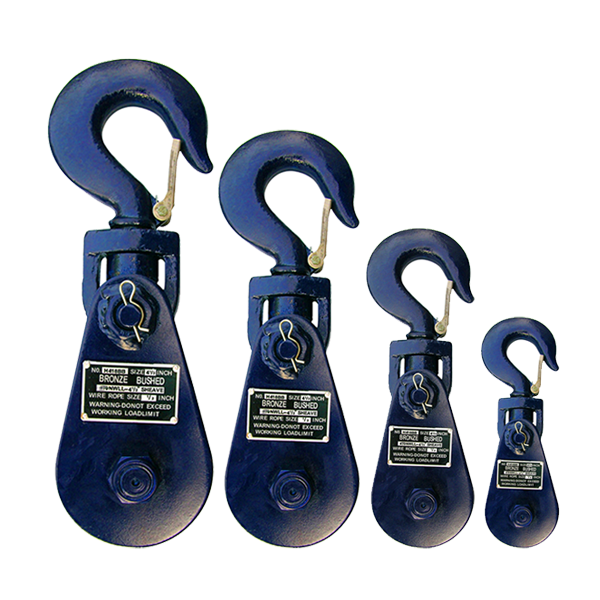Winch Smarter, Not Harder With the Right Snatch Block
Feb 22nd 2019
When you're dealing with a tough extraction, you usually have two options - work harder, or work smarter.
While we're all for putting in an honest days' work, the fact is that time is money in the towing business - and the right snatch block can dramatically cut the amount of time you spend on a job.
The Hardest-Working Pulley On Your Rig
A snatch block is basically a heavy-duty pulley that's mounted inside a metal casing with a distinctive feature - one side plate, or 'cheek plate' can swivel open by simply removing a clevis pin. This enables two things - you can insert the tow cable without threading it through the pulley, and you can also use the snatch block to change the direction of the pull without moving your truck.
To use a snatch block you need to anchor the block to a solid, fixed object such as a tree using straps. Spool out the tow cable to provide plenty of slack, swing open the side plate, and run the cable over the pulley. Secure the side plate, connect your tow hook, and complete the extraction to the point where you can complete the job using a straight pull.
Increased Force = Increased Risks
All that extra pulling power demands a lot of respect. Using a snatch block significantly amplifies the force that's exerted on both your winch and your cable, and the working line load can reach double the weight of the vehicle you're pulling.
Reduce the risks that come with using a snatch block by:
- Always use a high-quality snatch block that's rated to at least double the pull rating of the winch you'll be pairing it with
- Know the Working Load Limit (WLL) of both your cable and your snatch block and stay well within those limits
- Keep in mind additional factors like the incline of the pull, how deep the vehicle is stuck, and road surface can increase forces on the tackle
- The pulley diameter should be at least 8x the cable diameter to prevent extra stress on the cable
- Connecting a heavy bag over the cable to dampen whip if the cable should fail
- Pulling in short bursts to prevent overheating the winch motor
- Regularly inspecting your gear to check for deformation, worn bearings, or damaged latches
Here at East Coast Truck & Trailer Sales, we stock a full lineup of commercial-grade snatch blocks and sets designed to deliver exceptional performance in the most demanding environments.



